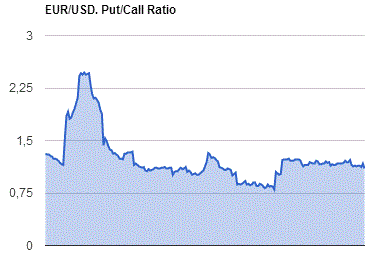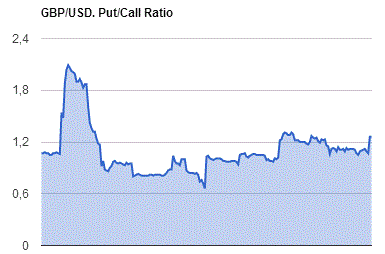Market news
-
19:00
U.S.: Federal budget , February -192 (forecast -150)
-
15:23
UK GDP estimate unchanged at 0.6% - NIESR
"Our monthly estimates of GDP suggest that output grew by 0.6 per cent in the three months ending in February 2017 after growth of 0.8 per cent in the three months ending in January 2017".
Rebecca Piggott, Research Fellow at NIESR, said "Our estimates suggest the economy expanded by 0.6 per cent in the three months ending in February 2017. Robust consumer spending growth has supported the economic expansion throughout 2016, but there are now signs that this support is beginning to soften. Consumer price inflation is expected to continue to increase throughout the rest of 2017, further reducing the contribution from consumer spending to economic growth. A key question is by how much and over what period of time this domestic economic weakness can be offset via contributions of net trade."
-
15:00
United Kingdom: NIESR GDP Estimate, February 0.6% (forecast 0.6%)
-
14:42
Greek Prime minister says we don't expect talks on Cyprus to resume before Turkey referendum
-
13:51
Option expiries for today's 10:00 ET NY cut
EURUSD: 1.0450 (EUR 751m) 1.0470 (252m) 1.0500 (2.3bln) 1.0520 (307m) 1.0550 (815m) 1.0570 (380m) 1.0600 (1.8bln) 1.0620 (435m) 1.0650 (497m) (1.0675 (546m) 1.0700 (665m)
USDJPY: 114.00 (USD 3.1bln) 114.50 (660m) 114.80 (410m) 115.00 (1.6bln) 115.20 (575m) 115.45-50 (1.4bln) 115.75 (300m) 116.00 (1.48bln)
AUDUSD: 0.7400 (AUD 200m) 0.7500 (1.29bln) 0.7525 (419m) 0.7550 (219m) 0.7600 (343m) 0.7635 (330m)
USDCAD: 1.3380 (USD 560m) 1.3410 (831m) 1.3475 (268m) 1.3500 (1.01bln) 1.3600 (240m)
NZDUSD: 0.7100 (NZD 337m)
EURGBP: 0.8700 (EUR 290m)
EURJPY: 121.50 (EUR 230m) 121.75-80 (378m)
-
13:39
US average hourly earnings rose less than expected in Feb. USD lower initially
In February, average hourly earnings for all employees on private nonfarm payrolls increased by 6 cents to $26.09, following a 5-cent increase in January. Over the year, average hourly earnings have risen by 71 cents, or 2.8 percent. In February, average hourly earnings of private-sector production and nonsupervisory employees increased by 4 cents to $21.86 in February.
-
13:36
US nonfarm payrolls increased by 235,000 in February, more than expected. Unemployment rate stable
Total nonfarm payroll employment increased by 235,000 in February, and the unemployment rate was little changed at 4.7 percent, the U.S. Bureau of Labor Statistics reported today. Employment gains occurred in construction,private educational services, manufacturing, health care, and mining.
The number of unemployed persons, at 7.5 million, changed little in February. The unemployment rate, at 4.7 percent, was little changed over the month but was down from 4.9 percent a year earlier.
-
13:30
U.S.: Unemployment Rate, February 4.7% (forecast 4.7%)
-
13:30
U.S.: Nonfarm Payrolls, February 235 (forecast 190)
-
13:30
U.S.: Average workweek, February 34.4 (forecast 34.4)
-
13:30
Canada: Employment , February 15.3 (forecast 2.5)
-
13:30
Canada: Unemployment rate, February 6.6% (forecast 6.8%)
-
13:30
U.S.: Average hourly earnings , February 0.2% (forecast 0.3%)
-
11:44
Norwegian Crown hits four-month low of 9.1385 Crowns per Euro , down 0.7 percent on day, on weaker-than-expected inflation data
-
10:57
Greek February EU-harmonised inflation at +1.4 pct y/y vs +1.5 pct in January
-
10:24
UK manufacturing production down 0.9% in January
In the 3 months to January 2017, total production was estimated to have increased by 1.9%, with manufacturing providing the largest contribution increasing by 2.1%, its strongest growth since May 2010.
The highly volatile pharmaceuticals sector provided the largest contribution to the manufacturing increase, along with smaller upwards contributions from a range of other manufacturing industries. In January 2017, total production decreased by 0.4% compared with December 2016 with manufacturing providing the largest downward contribution, decreasing by 0.9%.
-
10:06
Money markets show investors fully pricing European Central Bank rate hike in March 2018 - Ecbwatch
-
09:39
UK construction output fell by 0.4% in Jan
In January 2017, construction output fell by 0.4% compared with December 2016. However, output grew on a 3 month on 3 month basis by 1.8%.
Repair and maintenance fell 1.3% month-on-month in January, with decreases in public housing and non-housing repair and maintenance.
All new work showed signs of flattening out with growth of 0.1% in January 2017, but continued to grow in the latest 3 months compared with the previous 3 months at a rate of 2.1%.
Despite falling month-on-year for the 13th consecutive month, infrastructure grew month-on-month for the third time in a row, increasing 3.5% in January 2017.
-
09:38
UK trade balance deficit little changed in January
The trade deficit in goods and services in January 2017 was £2.0 billion, unchanged from December 2016.
Between the 3 months to October 2016 and the 3 months to January 2017, the total trade deficit (goods and services) narrowed by £4.7 billion to £6.4 billion.
At the commodity level, the main contributors to the narrowing of the total trade deficit in the 3 months to January 2017, were increased exports of non-monetary gold, oil, machinery and transport equipment (mainly electrical machinery, aircraft and cars) and chemicals.
-
09:31
United Kingdom: Consumer Inflation Expectations, 2.9%
-
09:30
United Kingdom: Industrial Production (YoY), January 3.2% (forecast 3.3%)
-
09:30
United Kingdom: Industrial Production (MoM), January -0.4% (forecast -0.4%)
-
09:30
United Kingdom: Manufacturing Production (MoM) , January -0.9% (forecast -0.6%)
-
09:30
United Kingdom: Total Trade Balance, January -1.97
-
09:30
United Kingdom: Manufacturing Production (YoY), January 2.7% (forecast 3%)
-
09:23
French output decreased sharply again in the manufacturing industry
In January 2017, output decreased sharply again in the manufacturing industry (−1.0% as in the previous month). It diminished more moderately in the whole industry (−0.3% after −1.1%).
Over the past three months, output grew in the manufacturing industry (+0.6% q-o-q), as well as in the overall industry (+0.9% q-o-q).
Output went up in "other manufacturing" (+0.9%). It increased sharply in mining and quarrying, energy, water supply (+3.1%), in the manufacture of transport equipment (+2.3%) and in the manufacture of coke and refined petroleum products (+3.0%). Conversely, it went down in the manufacture of food products and beverages (−1.1%) and in the manufacture of machinery and equipment goods (−0.4%).
-
08:01
France: Industrial Production, m/m, January -0.3% (forecast 0.5%)
-
07:33
Here is the next step from the ECB - Danske
"The ECB kept all policy measures unchanged at today's meeting, and President Draghi had a hawkish tone during the Q&A session as he said the Governing Council discussed whether to remove the 'lower levels' from the forward guidance on policy rates, notes Danske Bank Markets.
"In our view, a next step from the ECB when moving in a less dovish monetary policy direction is to remove the 'lower levels' from the forward guidance. However, according to Draghi this is a very small step and in our view it also does not mean the ECB will hike policy rates in the near future," Danske argues.
"We expect the ECB to continue to communicate that policy rates will remain at present levels for an extended period of time, and well past the horizon of the QE purchases. Hence, it should not start to communicate that policy rates could be hiked before the QE purchases have stopped running," Danske projects".
Source: Danske Bank Research, efxnews.
-
07:30
Turkish Deputy PM says inflation will fall to single digits in july, year-end will probably be 7.5 pct
-
07:30
Options levels on friday, March 10, 2017
EUR/USD
Resistance levels (open interest**, contracts)
$1.0788 (1043)
$1.0757 (117)
$1.0712 (36)
Price at time of writing this review: $1.0593
Support levels (open interest**, contracts):
$1.0518 (514)
$1.0471 (615)
$1.0416 (1521)
Comments:
- Overall open interest on the CALL options with the expiration date June, 9 is 37441 contracts, with the maximum number of contracts with strike price $1,1450 (3884);
- Overall open interest on the PUT options with the expiration date June, 9 is 38006 contracts, with the maximum number of contracts with strike price $1,0350 (3877);
- The ratio of PUT/CALL was 1.02 versus 1.08 from the previous trading day according to data from March, 9

GBP/USD
Resistance levels (open interest**, contracts)
$1.2415 (198)
$1.2319 (321)
$1.2224 (81)
Price at time of writing this review: $1.2165
Support levels (open interest**, contracts):
$1.2081 (576)
$1.1985 (778)
$1.1888 (785)
Comments:
- Overall open interest on the CALL options with the expiration date June, 9 is 12323 contracts, with the maximum number of contracts with strike price $1,3000 (1218);
- Overall open interest on the PUT options with the expiration date June, 9 is 15256 contracts, with the maximum number of contracts with strike price $1,1500 (3120);
- The ratio of PUT/CALL was 1.24 versus 1.21 from the previous trading day according to data from March, 9

* - The Chicago Mercantile Exchange bulletin (CME) is used for the calculation.
** - Open interest takes into account the total number of option contracts that are open at the moment.
-
07:29
Romanian February inflation 0.2 pct y/y vs 0.1 pct y/y in January; 0.3 pct forecast; -0.1 pct m/m
-
07:17
German wholesale trade increased by 5.0% in February
As reported by the Federal Statistical Office (Destatis), the selling prices in wholesale trade increased by 5.0% in February 2017 from the corresponding month of the preceding year. This was the highest increase of a yearly rate of change since August 2011 (+5.0%). In January 2017 and in December 2016 the annual rates of change were +4.0% and +2.8%, respectively.
From January 2017 to February 2017 the index rose by 0.5%.
-
07:16
German trade balance surplus rose due to higher exports in January
Germany exported goods to the value of 98.9 billion euros and imported goods to the value of 84.0 billion euros in January 2017. Based on provisional data, the Federal Statistical Office (Destatis) also reports that German exports rose by 11.8% and imports by 11.7% in January 2017 year on year. After calendar and seasonal adjustment, exports were up by 2.7% and imports by 0.3% compared with December 2016.
The foreign trade balance showed a surplus of 14.8 billion euros in January 2017. In January 2016, the surplus amounted to +13.2 billion euros. In calendar and seasonally adjusted terms, the foreign trade balance recorded a surplus of 18.5 billion euros in January 2017.
According to provisional results of the Deutsche Bundesbank, the current account of the balance of payments showed a surplus of 12.8 billion euros in January 2017, which takes into account the balances of trade in goods including supplementary trade items (+15.2 billion euros), services (-1.3 billion euros), primary income (+5.8 billion euros) and secondary income (-6.8 billion euros). In January 2016, the German current account showed a surplus of 14.6 billion euros.
-
07:02
Germany: Current Account , January 12.8
-
07:02
Germany: Trade Balance (non s.a.), bln, January 14.8
-
00:30
Australia: Home Loans , January 0.5% (forecast -1%)
-

